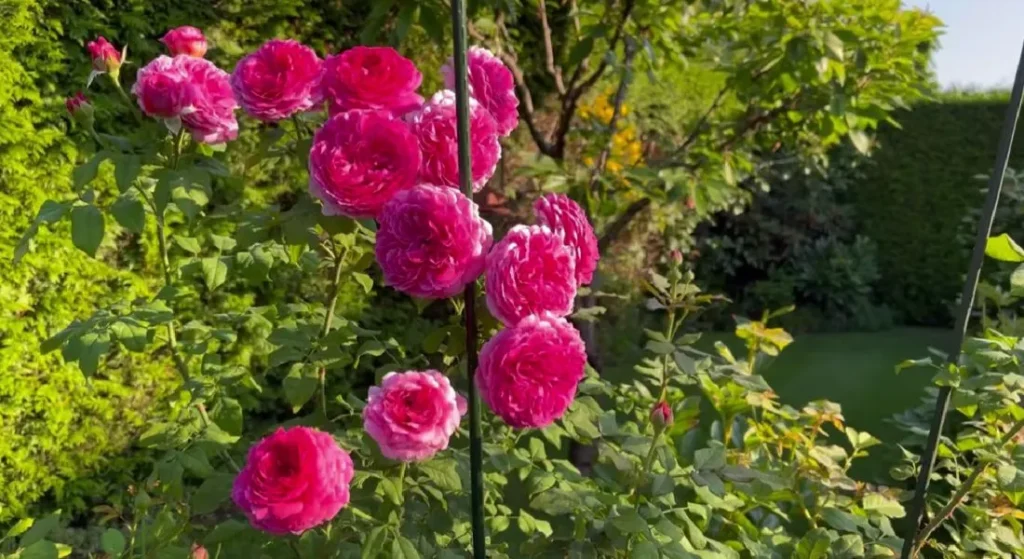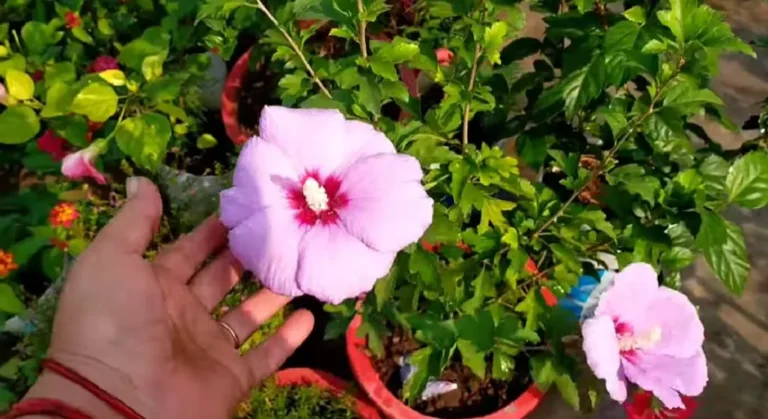Gabriel Oak Rose Problems: How to Identify and Solve Them
Are you having trouble with your Gabriel Oak roses? These beautiful roses are a favorite among gardeners, but they are not without their problems. Whether you are a seasoned gardener or a new enthusiast, it is important to know how to identify and prevent common problems with Gabriel Oak roses.
One of the most common problems with Gabriel Oak roses is blackspot, a fungal disease that causes black spots on the leaves. This can be prevented by ensuring the plants are well-spaced, and avoiding overhead watering.
Another common problem is powdery mildew, which causes a white powdery coating on the leaves. This can be prevented by ensuring the plants have good air circulation and are not overcrowded.
Identifying and preventing problems with Gabriel Oak roses is essential to maintaining a healthy and beautiful garden. With proper care and attention, you can enjoy these stunning roses for years to come. Read on to learn more about identifying and preventing common problems with Gabriel Oak roses.
Key Takeaways
- Gabriel Oak roses are prone to common problems such as blackspot and powdery mildew.
- Proper spacing, watering, and air circulation can prevent many problems with Gabriel Oak roses.
- Identifying and preventing problems with Gabriel Oak roses is essential to maintaining a healthy and beautiful garden.

Gabriel Oak Rose Problems
Are you experiencing problems with your Gabriel Oak rose? Don’t worry, you’re not alone. Here are some common issues and solutions to help you get your rose back to its full glory.
1. Disease
One of the most common problems with Gabriel Oak roses is disease. This can be caused by a variety of factors, including poor soil, improper watering, and pests. Some of the most common diseases that affect Gabriel Oak roses include:
- Blackspot: This fungal disease causes black spots on the leaves and can cause them to yellow and fall off. To prevent blackspot, make sure your rose is planted in well-draining soil and keep the leaves dry by watering at the base of the plant.
- Powdery mildew: This fungal disease causes a white, powdery coating on the leaves and can stunt the growth of the plant. To prevent powdery mildew, make sure your rose is planted in a sunny location with good air circulation and avoid overhead watering.
- Rust: This fungal disease causes orange or rust-colored spots on the leaves and can cause them to fall off. To prevent rust, make sure your rose is planted in well-draining soil and avoid overhead watering.
2. Pests
Another common problem with Gabriel Oak roses is pests. Some of the most common pests that affect roses include:
- Aphids: These small, soft-bodied insects suck the sap from the leaves and can cause them to curl and turn yellow. To get rid of aphids, spray your rose with a strong stream of water or use an insecticidal soap.
- Spider mites: These tiny pests can cause the leaves to turn yellow and fall off. To get rid of spider mites, spray your rose with a strong stream of water or use a miticide.
3. Pruning
Improper pruning can also cause problems with Gabriel Oak roses. If you prune your rose too much, it can stunt its growth and reduce its flowering. If you don’t prune it enough, it can become overgrown and leggy. To prune your rose properly, make sure you:
- Use clean, sharp pruning shears.
- Cut at a 45-degree angle.
- Remove any dead or diseased wood.
- Cut back to a healthy bud.
Environmental Issues
Some environmental factors can impact the health of your Gabriel Oak roses, like drought, excessive moisture, and poor air circulation. While we can’t control the weather, we can definitely take steps to mitigate these issues.
For drought, be diligent about watering your roses, ensuring they receive consistent moisture. In cases of excessive moisture, make sure you have well-draining soil and avoid planting your roses in low-lying areas where water can accumulate. As for air circulation, be mindful of spacing when planting your roses, and prune them regularly to maintain an open structure.
Identifying Common Problems with Gabriel Oak Roses

Gabriel Oak roses are beautiful and fragrant, but like any other plant, they can be susceptible to various problems. Identifying these problems early on is crucial to keeping your roses healthy and thriving. In this section, we will discuss common problems that gardeners face when growing Gabriel Oak roses and how to identify them.
Disease Identification
Gabriel Oak roses can be affected by various diseases, and some of the most common ones are:
- Black Spot: This disease is characterized by black spots on the leaves, which can cause them to yellow and drop prematurely. It’s caused by a fungus that thrives in warm, humid conditions.
- Powdery Mildew: This disease appears as a white, powdery coating on the leaves, stems, and buds. It’s caused by a fungus that thrives in warm, dry conditions.
- Botrytis Blight: This disease causes the blooms to turn brown and wither. It’s caused by a fungus that thrives in cool, damp conditions.
- Cankers: These are areas of dead tissue on the stems and branches. They can be caused by various fungi and bacteria.
To identify these diseases, look for the following signs:
- Black spots on the leaves (Black Spot)
- White, powdery coating on the leaves, stems, and buds (Powdery Mildew)
- Brown, withered blooms (Botrytis Blight)
- Dead tissue on the stems and branches (Cankers)
Pest Identification
Gabriel Oak roses can also attract various pests, including:
- Aphids: These are small, pear-shaped insects that feed on the sap of the plant. They can be green, yellow, or blackish in color.
- Thrips: These are tiny insects that feed on the leaves and flowers of the plant. They can cause the leaves to curl and become distorted.
- Spider Mites: These are tiny, spider-like insects that feed on the sap of the plant. They can cause the leaves to turn yellow and drop prematurely.
- Japanese Beetles: These are metallic green beetles that feed on the leaves and flowers of the plant. They can cause significant damage to the plant.
To identify these pests, look for the following signs:
- Small, pear-shaped insects on the leaves and stems (Aphids)
- Distorted leaves (Thrips)
- Yellow, dropping leaves (Spider Mites)
- Metallic green beetles on the leaves and flowers (Japanese Beetles)
Preventing Gabriel Oak Rose Problems
If you want your Gabriel Oak roses to thrive, it’s important to take preventative measures to avoid problems. Here are some tips to keep your roses healthy and beautiful.
Proper Planting Techniques
When planting your Gabriel Oak roses, follow these techniques to ensure they have the best chance of success:
- Choose a location with plenty of sun, as roses need at least six hours of direct sunlight each day.
- Make sure the soil is well-drained and rich in organic matter. If the soil is too heavy, mix in some sand or perlite to improve drainage.
- Dig a hole that is twice as wide and just as deep as the root ball. Gently loosen the roots and spread them out in the hole.
- Backfill the hole with soil, making sure the graft union is at or slightly below ground level.
- Water the plant deeply after planting and mulch around the base to help retain moisture.
Proper Pruning Techniques
Pruning is essential to keep your Gabriel Oak roses healthy and promote new growth. Follow these tips for proper pruning:
- Use sharp, clean pruning shears to make clean cuts and avoid damaging the plant.
- Prune in late winter or early spring before new growth begins.
- Remove any dead, diseased, or damaged wood, cutting back to healthy wood.
- Cut back any crossing branches to prevent rubbing and encourage air circulation.
- Remove any suckers that emerge from below the graft union, as these will not produce the same quality of roses as the grafted plant.
By following these planting and pruning techniques, you can help prevent common problems with Gabriel Oak roses and keep your plants healthy and beautiful for years to come.
Treating Gabriel Oak Rose Problems
If you’re experiencing problems with your Gabriel Oak roses, don’t worry. There are ways to treat the most common issues and get your roses looking healthy and beautiful again.
Disease Treatment
Gabriel Oak roses are generally hardy and disease-resistant, but they can still fall victim to a few common diseases. Here are some tips for treating them:
- Black Spot: This fungal disease can cause black spots on the leaves and eventually lead to defoliation. To treat it, remove any infected leaves and spray the plant with a fungicide. Make sure to keep the leaves dry, as moisture can promote the growth of the fungus.
- Powdery Mildew: This is another fungal disease that can cause a white powdery coating on the leaves. To treat it, remove any infected leaves and spray the plant with a fungicide. You can also try spraying the leaves with a mixture of milk and water (1 part milk to 9 parts water), which has been shown to be effective in preventing powdery mildew.
- Rust: This fungal disease can cause orange or rust-colored spots on the leaves. To treat it, remove any infected leaves and spray the plant with a fungicide.
Pest Treatment
Pests can also be a problem for Gabriel Oak roses. Here are some tips for treating the most common pests:
- Aphids: These small insects can suck the sap from the leaves and cause them to curl and distort. To treat them, spray the plant with a strong jet of water to knock them off, or use an insecticidal soap or oil.
- Spider Mites: These tiny pests can cause yellowing and stippling on the leaves. To treat them, spray the plant with a strong jet of water to knock them off, or use an insecticidal soap or oil.
- Japanese Beetles: These beetles can eat the leaves and flowers of the plant. To treat them, pick them off by hand and drop them into a bucket of soapy water. You can also use a trap or a pesticide, but be careful not to harm beneficial insects like bees and ladybugs.
Planting and Care Tips for a Healthy Gabriel Oak Rose

Now that we’ve covered potential issues let’s focus on how to plant and care for your Gabriel Oak roses to avoid common problems.
Soil and Sunlight Requirements
When it comes to planting Gabriel Oak roses, location is key. These beauties thrive in moist, well-draining soil, and full sun exposure – ideally, at least six hours of direct sunlight per day. Be cautious about planting your roses in sites that have previously been used for growing roses, as this can increase the risk of disease and pest problems.
Watering Practices
Hydration is essential for your Gabriel Oak roses, but it’s all about finding the right balance. Deep, regular watering is the way to go. Aim to water your roses at the base, avoiding overhead watering, which can lead to wet foliage and disease development.
If you’re unsure whether your roses need water, simply stick your finger a couple of inches into the soil. If it feels dry, it’s time for a drink!
Pruning Techniques
Proper pruning is crucial for maintaining a healthy and attractive Gabriel Oak rose. By regularly pruning your roses, you’ll promote air circulation, maintain a healthy shape, and prevent pest and disease problems. Here are some tips for pruning success:
- Prune your roses in late winter or early spring, before new growth begins.
- Use clean, sharp tools to make clean cuts at a 45-degree angle, about 1/4 inch above an outward-facing bud.
- Remove any dead, damaged, or diseased wood, as well as any branches that are crossing or rubbing against each other.
- Aim for an open, vase-shaped structure with evenly spaced canes to encourage optimal air circulation.
FAQs
I know you might still have some questions about Gabriel Oak roses, so let’s address some of the most common ones:
Is the Gabriel Oak rose drought-tolerant?
Unfortunately, Gabriel Oak roses are not drought-tolerant. They require consistent moisture to thrive, so be sure to water them regularly, especially during dry periods.
Can Gabriel Oak roses tolerate flooding?
No, Gabriel Oak roses do not tolerate flooding well. They need well-draining soil to prevent root rot and other moisture-related issues. Be mindful of planting locations and avoid low-lying areas prone to water accumulation.
Are Gabriel Oak roses toxic to pets or humans?
Thankfully, Gabriel Oak roses are not toxic to pets or humans. However, it’s always a good idea to keep an eye on curious pets or young children to prevent any accidental ingestion of plant material.
How many petals do Gabriel Oak roses typically have?
Gabriel Oak roses are known for their heavily-packed blooms, which can have up to 125 petals. This contributes to their stunning rosette shape and rich, full appearance.
Conclusion
Growing Gabriel Oak roses may come with its challenges, but with proper care and maintenance, you can prevent most issues and enjoy these stunning, fragrant blooms in your home garden.
Embrace the beauty of this extraordinary rose variety, and let its deep pink petals and intense fruity fragrance bring joy to your outdoor space. With a little love and attention, your Gabriel Oak roses will flourish, and you’ll be rewarded with a garden that’s truly a sight to behold. Happy gardening!
Related Posts:






